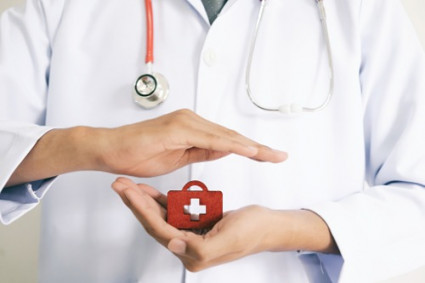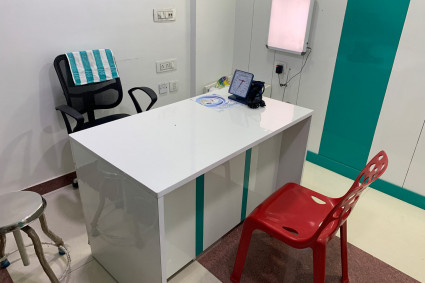After an evening out, you find yourself sharing bed with someone you don't know well and are afraid that an STD such as HIV may have infected both of you.
HIV attacks CD4 cells - white blood cells which help your immune system fight infection - and destroys them, weakening it to such an extent that infections that wouldn't normally make you ill can come to fruition and make you ill. Without them, your immunity becomes compromised, leaving you vulnerable against illnesses which wouldn't normally make an impression.
What is a one-night stand?
One-night stands are sexual encounters outside of established relationships that occur without prior commitment or relationship ties, from fun and liberating encounters to awkward or difficult ones, usually between people you only met once before.
One-night stands can lead to long-term relationships, while in others they simply serve as a way of satisfying sexual cravings without the commitment required for serious relationships. They may even sever existing partnerships by damaging committed partnerships through sexual encounters that only last one night.
Many people engage in one-night stands with strangers they meet at bars, clubs or social settings; others hook up through online dating services like Tinder. No matter the circumstances surrounding a one-night stand, it is crucial that precautions be taken in order to protect against sexually transmitted diseases (STDs). If engaging in such activity it should be made clear that this encounter will only last one night with protection worn and made known prior to engaging.
How can you get HIV from a one-night stand?
One-night stands (or one-night sex) are an unprotected sexual encounter between individuals who do not share an existing romantic or intimate relationship. They usually occur following some drinks at a bar or party and involve sleeping with someone you barely know - although this might sound risky, one-night stands are extremely common and their chances of transmission of HIV from it are low.
HIV transmission rates depend on type and age of sexual activity; anal sex (bottoming) poses the highest risk of infection; condom use or effective HIV treatments or PrEP can significantly lower that risk; HIV can also be transmitted through vaginal fluid, oral sex, pre-cum and small cuts and sores on the body.
Condoms provide excellent protection from HIV and other STDs, but can still become damaged. If you're not certain of your partner's status when it comes to HIV infection, get a rapid HIV test for peace of mind - you don't need to tell them your status; simply be forthcoming about sexually transmitted diseases including Chlamydia as this will reduce risks of transmission and help avoid unwanted pregnancy.
How common is it to get HIV from a one-night stand?
There are various routes of HIV transmission. One way is through unprotected sexual encounter, while others include sharing sex toys like dildos or vibrators; using used needles/syringes containing residual fluid from previous users or being infected with HPV which increases your chances of contracting HIV.
HIV transmission rates depend on many variables, including type of sexual exposure and number and status of partners; while the risk from one-night stands is generally low, it's still important to use condoms whenever possible and get tested for all STDs regularly.
Chances of contracting HIV from one-night stands vary widely depending on factors like the type of sexual contact and whether both partners wear condoms. Anal sex poses the highest risk, followed by vaginal or oral sex which carries lower risks; but no sexual exposure is entirely risk-free, with even small risks adding up over time to increase one's lifetime risk of getting HIV. These risks increase further when an individual remains uncircumcised or when women menstruate.
What are the risks of getting HIV from a one-night stand?
Risks associated with one-night stands vary based on several factors, including type and frequency of sexual activities as well as whether either partner is infected with HIV. Gender differences also come into play; men are more likely to acquire HIV through oral sex or penile ejaculation while risk increases for women if she has vaginal discharge or sexually transmitted infections like chlamydia or herpes.
Note that when living with HIV and having an undetectable viral load, their risk of passing it through sexual contact is minimal. To lower this risk further, condom use and taking preventive medication like PrEP/PEP can help.
The virus can spread via multiple methods other than sexual contact, including vaginal and anal sex, sharing needles, pregnancy and breastfeeding. Risks of transmission increase exponentially in lower-income countries where hospitals may not screen blood for HIV. HIV can also be spread via blood transfusion in high-income countries, although this risk is rare in the US and other upper middle income nations where hospitals and blood banks routinely test donated blood for HIV. The virus can also be transmitted from mother to baby during gestation or delivery; however, such transmissions are very unlikely in upper-middle and high-income countries where most pregnant women receive adequate prenatal care and receive treatments for sexually transmitted infections and STIs to lower their risk.
Here are some ways to prevent HIV from a one-night stand:
- Use condoms: Condoms are the most effective way to prevent the transmission of HIV and other sexually transmitted infections (STIs). Always carry condoms with you and make sure to use them during any type of sexual activity, including oral, vaginal, and anal sex. It's also important to note that condoms are not 100% effective, but they greatly reduce the risk of HIV transmission.
- Talk about HIV status: It may feel awkward or uncomfortable, but it's important to have a conversation with your sexual partner about their HIV status before engaging in any sexual activity. If they are hesitant to discuss it or do not know their status, it's best to avoid engaging in sexual activity with them.
- Get tested regularly: If you are sexually active, it's important to get tested for HIV and other STIs regularly. This not only helps to protect your own health but also encourages your sexual partners to do the same. Knowing your HIV status can also help you make informed decisions about your sexual encounters.
- Avoid sharing needles: If you use drugs, it's important to never share needles or any other drug paraphernalia. This greatly increases the risk of HIV transmission, as well as other blood-borne infections. If you struggle with drug use, seek help and support from a healthcare professional.
- Consider PrEP: Pre-exposure prophylaxis (PrEP) is a daily medication that can greatly reduce the risk of HIV transmission. It is recommended for individuals who are at high risk of contracting HIV, including those who engage in one-night stands. If you are interested in PrEP, consult with a healthcare professional to see if it is a suitable option for you.
- Trust your instincts: If something doesn't feel right, trust your instincts and don't engage in sexual activity. Your safety and well-being should always come first. If your partner pressures you or makes you feel uncomfortable, leave the situation and seek help if needed.
In conclusion, while one-night stands can be a fun and exciting experience, it's crucial to prioritize your sexual health and safety. By practicing safe sex, having open and honest conversations with your sexual partners, and getting tested regularly, you can greatly reduce the risk of HIV transmission. Remember, your health and well-being should always come first.





